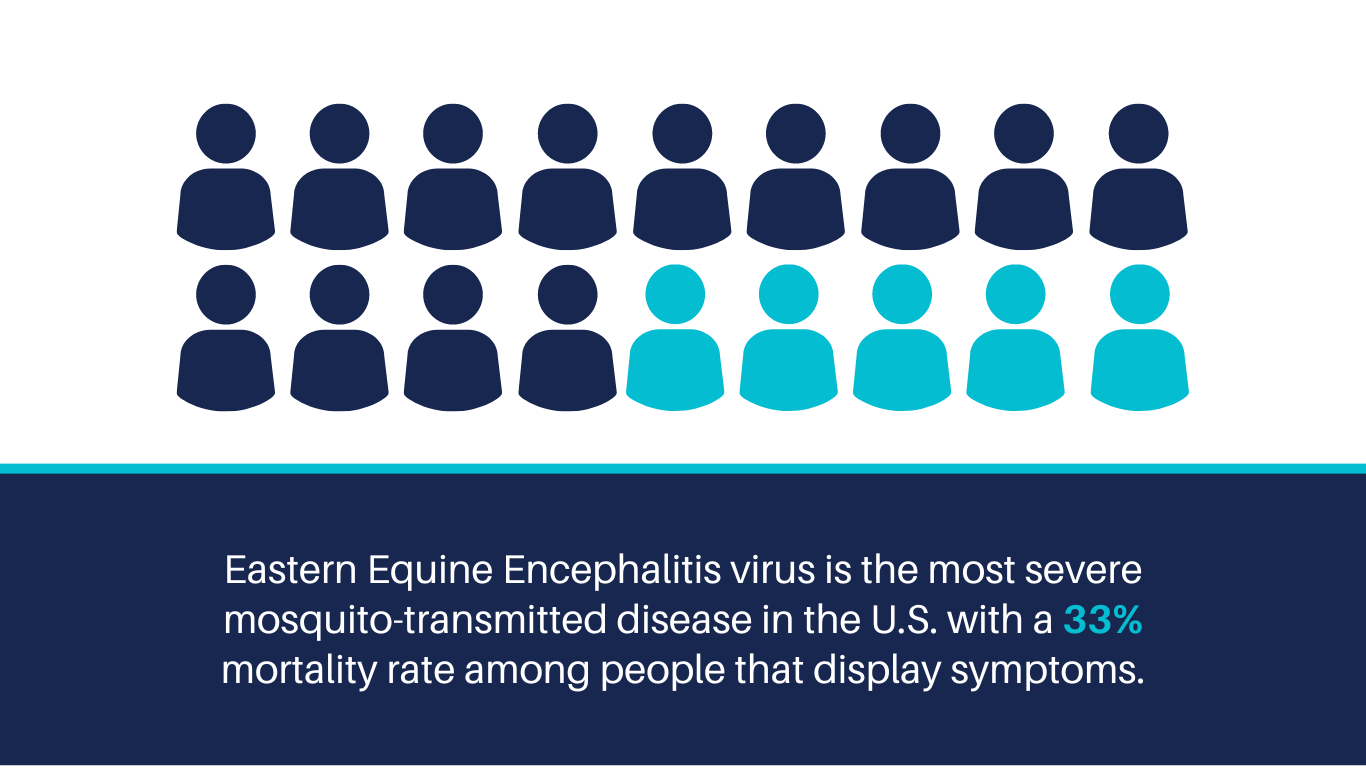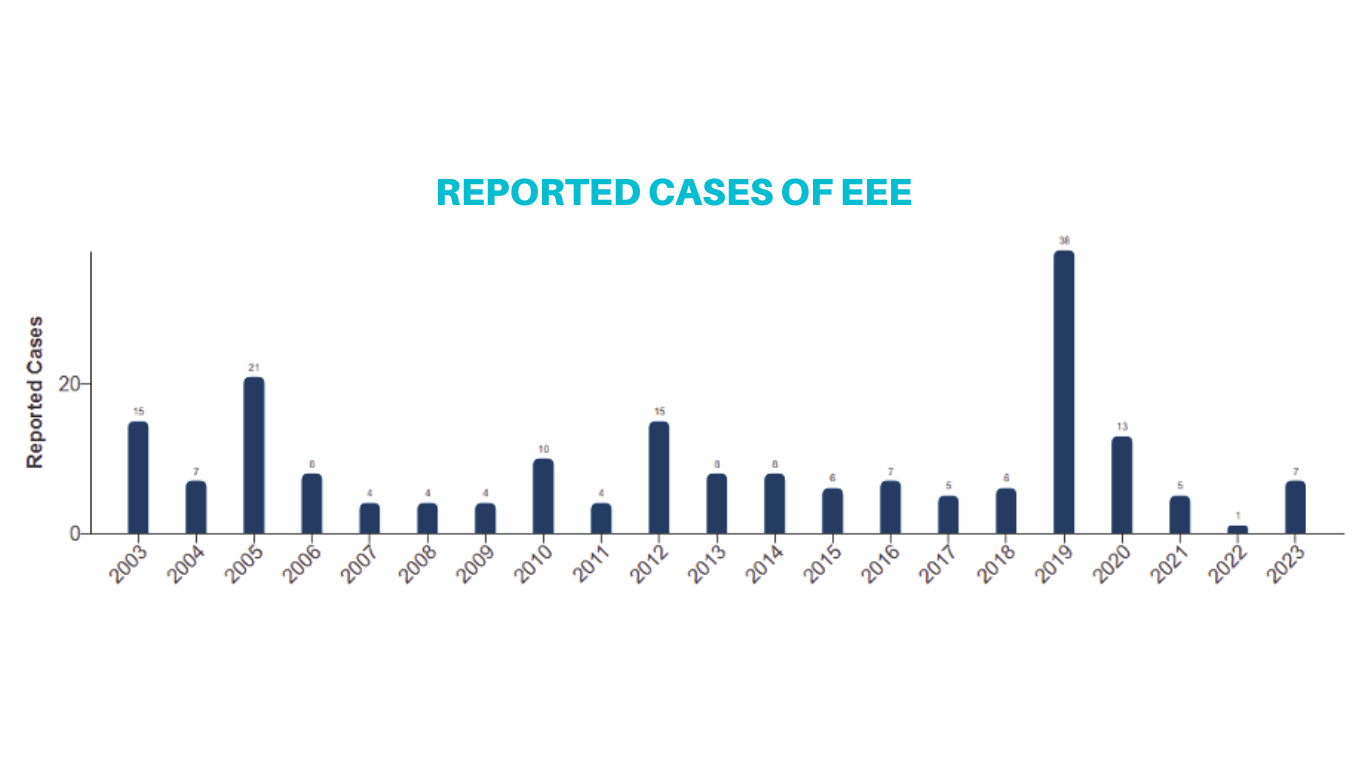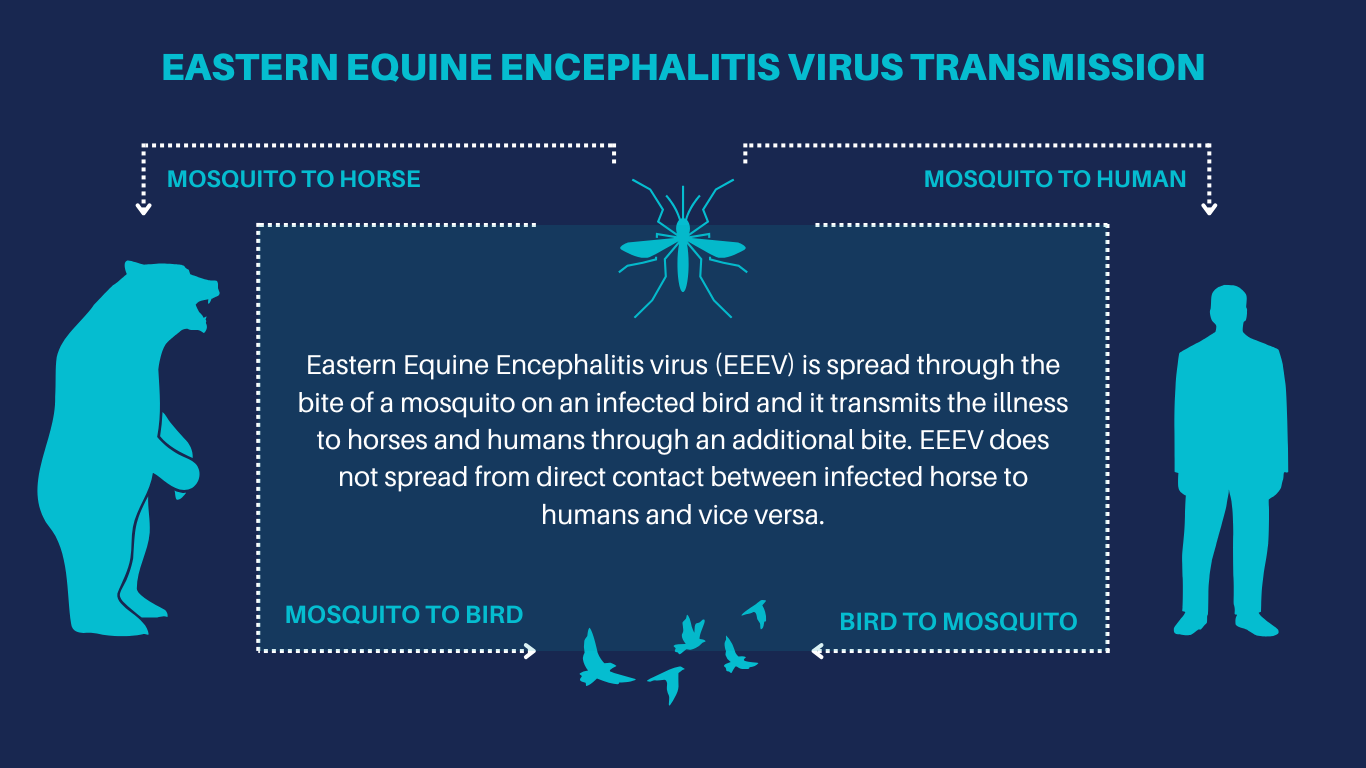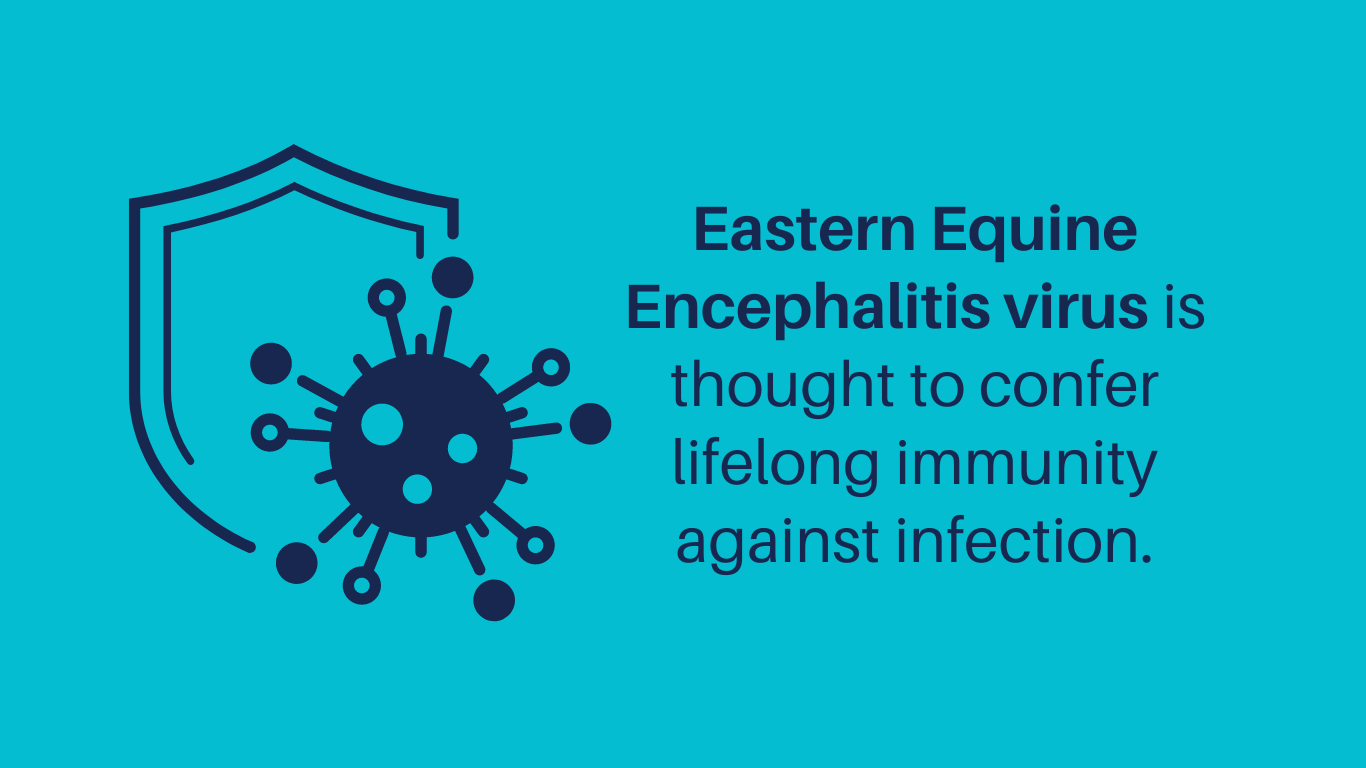Eastern Equine Encephalitis Virus: What You Need to Know
Although not talked about as much as other mosquito-borne diseases, the Eastern Equine Encephalitis virus (EEE) is one of the most serious and deadly diseases transmitted by a mosquito. When infected, symptoms occur between four and ten days after contracting the disease and begin with headache, vomiting, chills and fever. EEE often ends with severe brain damage, seizures or coma. Since there is no specific treatment, cure, or vaccine, the severity of this disease is extremely high. According to the Center for Disease Control and Prevention (CDC), approximately 30% of humans who develop EEE die, representing the highest mortality rate among arboviruses. Many of those who survive will have mild to severe permanent neurologic damage.
There were 196 human cases of EEE reported between the years 2003-2023. The Eastern Equine Encephalitis virus has been reported mostly in the Atlantic and Gulf Coast states and according to the CDC, it occurs primarily from late spring through early fall. This rare disease is carried by the Aedes, Coquillettidia and the Culex mosquito species. These mosquitoes are usually found around freshwater hardwood swamps in the Atlantic and Gulf Coast states, as well as the Great Lakes region.
As of July 23, 2024, no human EEE cases have been reported this year, but non-human activity has been noted.


There were 196 human cases of EEE reported between the years 2003-2023. The Eastern Equine Encephalitis virus has been reported mostly in the Atlantic and Gulf Coast states and according to the CDC, it occurs primarily from late spring through early fall. This rare disease is carried by the Aedes, Coquillettidia and the Culex mosquito species. These mosquitoes are usually found around freshwater hardwood swamps in the Atlantic and Gulf Coast states, as well as the Great Lakes region.


The disease is significantly more severe among horses, where the mortality rate may be as high as 90%. It is also more prevalent in horses, with 2,149 confirmed equine cases occurring in the United States between 2008 and 2021. A vaccine does exist to prevent the disease among horses, and it is typically recommended by veterinarians. Experts also recommend horse owners change the water in troughs at least twice a week to prevent mosquito breeding.

The only way to prevent EEE among humans is to avoid being bitten by an infected mosquito. Since there is no known cure or treatment, bite prevention is essential.
Effective bite prevention begins with limiting potential breeding sites for mosquitoes, primarily by removing artificial containers and modifying water holding features wherever possible. Every effort should be made to eliminate standing water in buckets, old tires, gutters, birdbaths, flower pots and more. Additional protection inside the home includes the use of air conditioning and properly maintained window screens. For time spent outdoors, experts recommend use of mosquito repellents containing DEET or another active ingredient found in EPA-registered insect repellents, and loose-fitting clothing.
For mosquito abatement professionals, the key to control is to establish an integrated mosquito management (IMM) approach that includes surveillance of breeding sites and the early use of larvicides for prevention as well as the use of adulticides to address problem adult mosquito populations. IMM is designed to attack mosquitoes at each stage of their life cycle. No two mosquito habitats are alike – and neither are the ways they need to be treated. The mosquito products from Central Life Sciences provide solutions for both easy-to-access and difficult-to-treat areas.
For the most efficient control of Culex mosquitoes, larvicides should be proactively administered to known breeding sites. Altosid® larvicides are available in multiple formulations containing our pioneering Insect Growth Regulator (IGR), (S)-methoprene, that stops mosquitoes from becoming breeding, biting adults. For an alternate approach, FourStar® Microbials feature a larvicide that kills mosquito larvae before they become adults by using the naturally occurring bacteria Bacillus sphaericus (Bsph) and Bacillus thuringiensis israelensis (Bti).
For the remaining adult populations, adulticides kill the fully developed mosquitoes that spread diseases and offer the quickest approach to reduce the size of mosquito populations. Zenivex® adulticides feature Etofenprox, and they are classified as reduced risk by the EPA.
Eastern Equine Encephalitis virus and other mosquito-borne diseases can be a threat to public health, but one that can be minimized through effective vector control efforts.
For more information, contact a representative near you.






